Bacteria in the seafloor form cm-long electrical conducting threads. TU researchers presented their remarkable discovery in Nature Communications. How can this be applied?
Diana Vasquez Cardenas and Filip Meysman with a sample of cable bacteria. (Photo: Jos Wassink)
Electron transport in biology usually entails electrons jumping from one protein to another over a distance of nanometres. By contrast, the mechanism that TU Delft Professors Filip Meysman and Herre van der Zant propose in Nature Communications acts on scales millions times bigger. Up to 10,000 adjacent bacterial cells have been shown to form 5 cm long electrical conducting filaments 50 times thinner than a human hair.
These so-called ‘cable bacteria’ have been found in the upper few centimetres of the seafloor. Their conductivity is comparable to that of the organic materials in a smartphone led display. This is amazing because cable bacteria reach this conductivity without resorting to doping with concentrated acids or materials as chlorine, boron or sodium – as the industry currently does to obtain organic conductors.
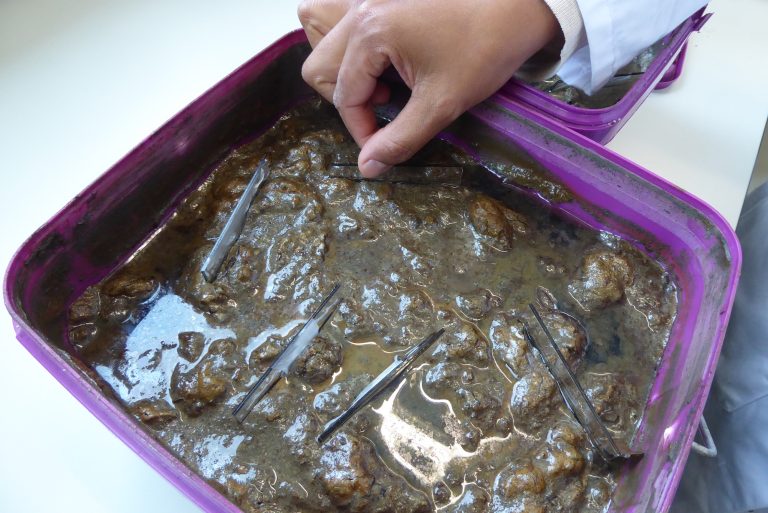

The story started seven years ago when Danish marine biologists reported strange pH profiles in the upper few centimetres of the sea floor. There was sulphide (H2S) deeper down, and dissolved oxygen in the overlying water. But how to explain the layer in between, where the sulphide had been vanished, and the weird acidity (pH) signals appeared?
Meysman, who works both at the TU Delft faculty of Applied Sciences (Biotechnology) and the University of Antwerp, was present at the 2012 conference where this issue was raised. He remembers the speculation on various mechanisms that could explain the phenomenon, such as an electrical current through the soil. That would make sense, as the sulphide would be oxidised to sulphate, liberating electrons, and higher up, dissolved oxygen could take up the electrons. But the idea was contentious because there was no known electrical conductor present in the seabed.


Back home, Meysman took sediment samples of the Oosterschelde. These sediments showed the same strange pH profiles as the Danes had reported. Soon after, thin white threads were discovered in close connection to the strange pH signals: long bacteria apparently generated the electrical currents through the seafloor. Meysman and his team showed that these so-called cable bacteria were omnipresent in the seabed, and that the electrical currents they produced have a large impact on the seabed ecosystem. His proposal to thoroughly research this new phenomenon of microbial electricity won him a Vici research grant from NWO in 2017.
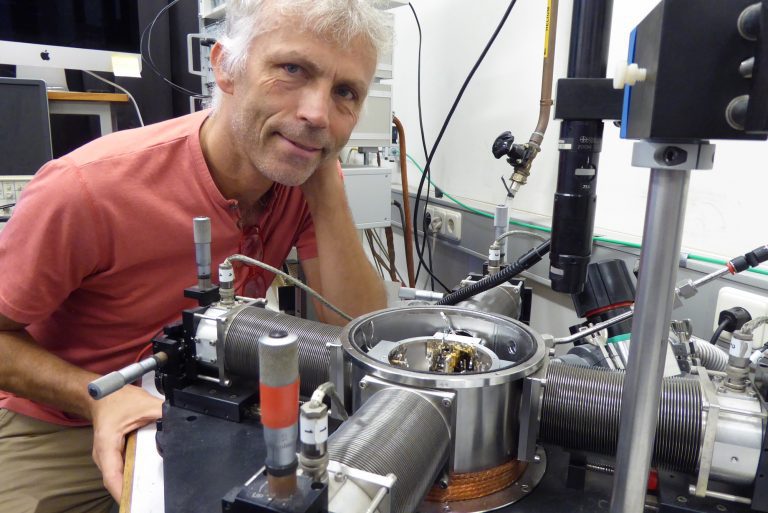

But how on earth could a long bacterium conduct an electrical current? To tackle this problem Meysman teamed up with Professor Herre van der Zant (Quantum Nanoscience, Faculty of Applied Sciences), who is an expert in the electrical characterization of bio-molecules. Though measuring the conductivity of a single cable bacterium filament proved far from easy. Filaments have to be first isolated from the sediment, and then they need to go through a number of preparatory biochemical extraction steps, euphemistically called ‘the car wash’. After that, they are deposited on a chip with gold contacts and put in a nitrogen atmosphere (as oxygen degrades the conductor).
Still, the team finally managed to master the trick, and they were able to confirm the existence of the ‘highly conductive fibres embedded in the cell envelope of the cable bacteria’, as reported in Nature Communications.
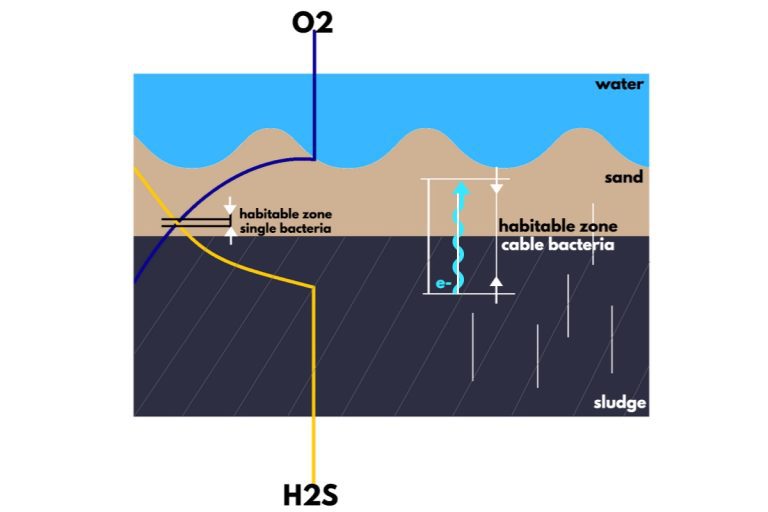

What evolutionary benefit can bacteria derive from their electrical conduction? Meysman has a neat explanation. Bacteria, he says, derive their energy to grow from the oxidation of sulphide. To do so, they need access to both sulphide (the electron donor) and oxygen (the electron acceptor). But the layer where both substances are present in the seafloor is very thin (see left side of graph).
By forming conductive filaments that transport electrons, cable bacteria can harvest sulphide in a much thicker slice of the seafloor, and this way, they out-compete other bacteria that haven’t developed this strategy.
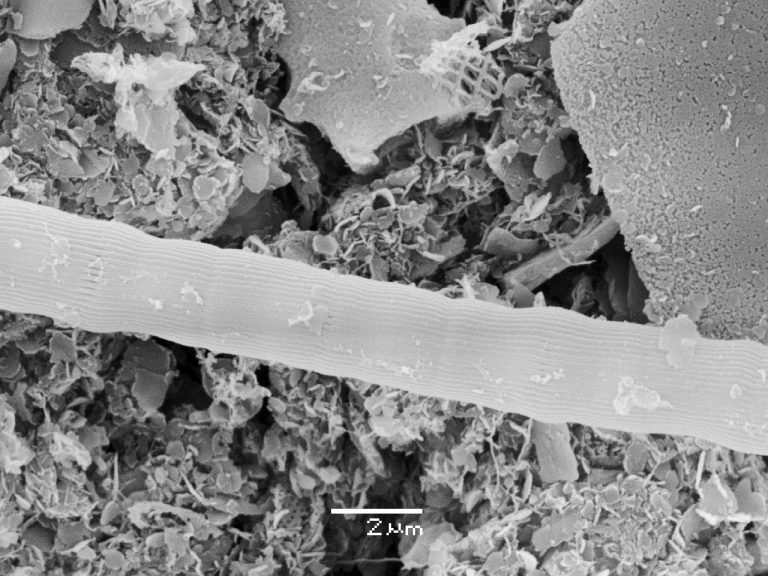

Ongoing research aims to find out more on the structural and material basis of the conducting fibres that are lining the cable bacteria. Perhaps new organic conductors may be developed. Meysman floats the idea of ‘transient electronics’ for sensors that function only during a predefined period of time and then biodegrade.
“The discovery of microbial electricity surely provides a doorway to new applications”, he says. “We have now just opened this door a little bit and we’re anxious to discover what lies behind it.”
-
Filip J. R. Meysman, Rob Cornelissen, Stanislav Trashin et. al., A highly conductive fibre network enables centimetre-scale electron transport in multicellular cable bacteria, Nature Communications, 11 September 2019. Direct link.
Do you have a question or comment about this article?
j.w.wassink@tudelft.nl

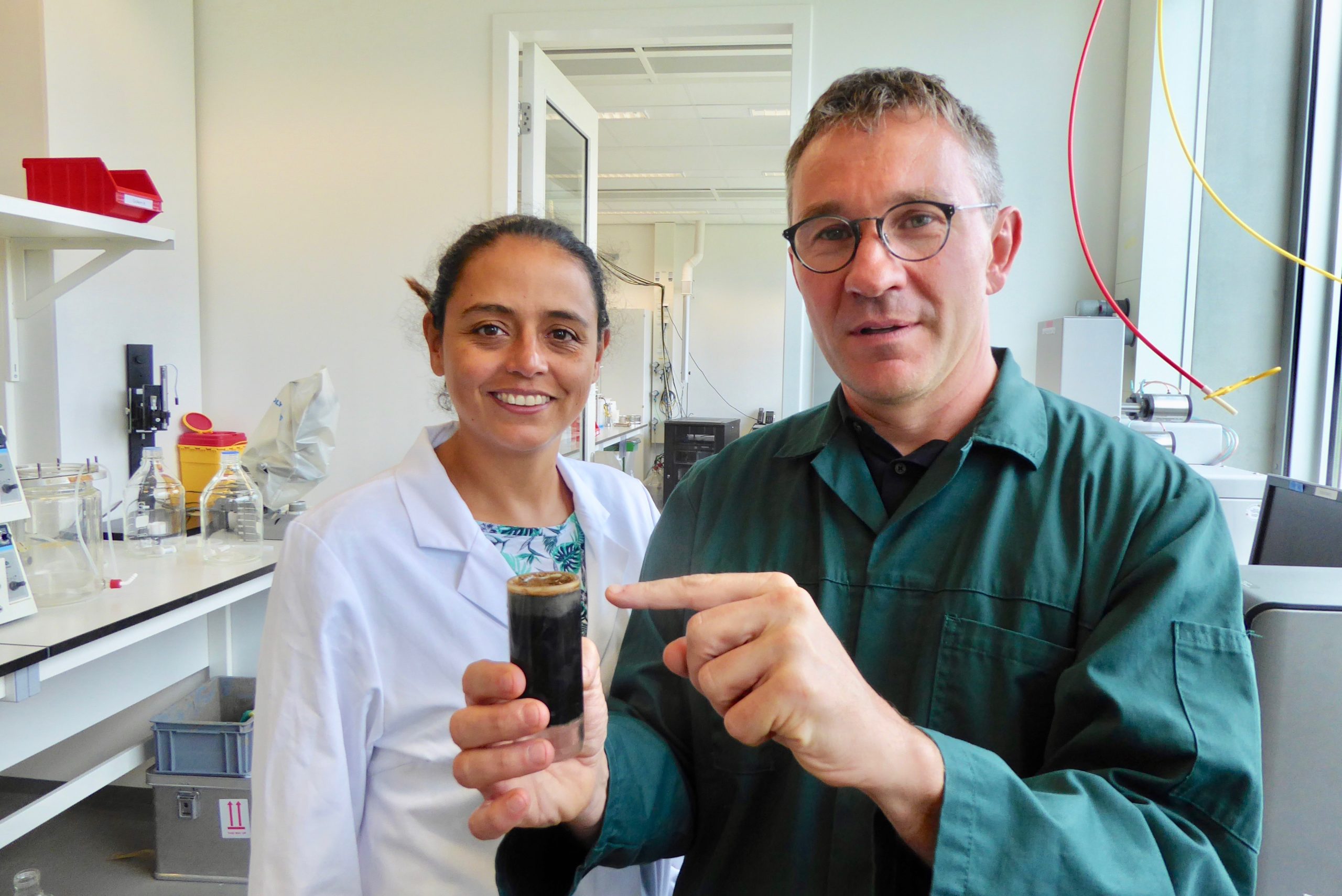
Comments are closed.